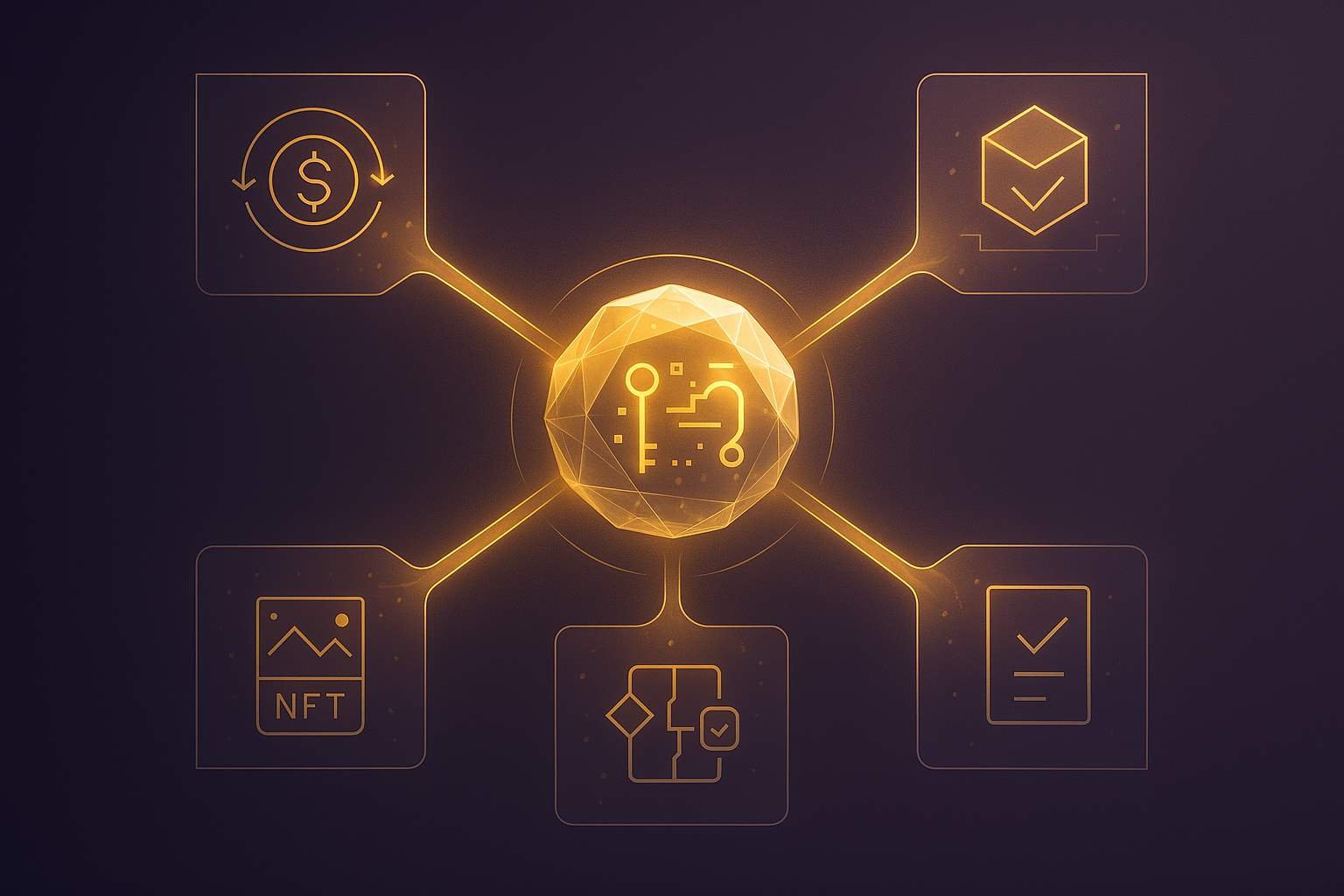A Beginner’s Guide to Crypto Coins and Tokens 📕
If you’re new to the crypto world, you might assume “coins” and “tokens” are the same, often used interchangeably to describe digital assets.
However, coins and tokens represent distinct types of cryptocurrencies, each with unique characteristics and purposes. Understanding their differences is key, especially when navigating more advanced crypto concepts.
What Is a Crypto Coin? 🤔
A crypto coin is the native digital asset of a blockchain protocol. It acts as the primary currency for transactions or smart contracts on that blockchain. Coins exist at the foundational level of a blockchain, not within decentralized applications (dApps) built on top of it.
Since they’re the core cryptocurrency of a blockchain, coins are often called “Layer 1” assets. While various networks, apps, or games may operate on top of these Layer 1 blockchains, the coins serve as the base layer that supports these additional layers and their associated tokens.
Crypto coins usually share a name similar to their blockchain. For example, Bitcoin (BTC) is the native coin of the Bitcoin blockchain, and Ether (ETH) is the native coin of the Ethereum blockchain.
How Do Crypto Coins Work? ⚙️
Crypto coins have multiple uses within their blockchain ecosystems. Some users treat them as a medium of exchange for peer-to-peer electronic transfers, while others see them as a store of value, free from the controls of government-backed currencies. In many ways, coins function like traditional money or commodities such as gold.
New coins are introduced into circulation through validator rewards in blockchain consensus mechanisms like proof-of-work (PoW) or proof-of-stake (PoS). In PoW, users “mine” coins by solving computational puzzles, while in PoS, users stake their coins to earn rewards and secure the network.
Examples of Crypto Coins
Some well-known crypto coins include:
- Bitcoin (BTC)
- Ethereum (ETH)
- Cardano (ADA)
- Solana (SOL)
- Polkadot (DOT)
- Ripple (XRP)
- Litecoin (LTC)
- Tron (TRX)
- Tezos (XTZ)
- Algorand (ALGO)
What Are Crypto Tokens? 🧐
Crypto tokens are digital assets created and deployed on top of an existing Layer 1 blockchain. Unlike coins, tokens are native to the products, services, or dApps built on these blockchains, not the blockchain itself.
Ethereum is the most popular Layer 1 blockchain for creating tokens, but other blockchains like Solana also support token development. For instance, within the Solana ecosystem, various dApps, games, and services exist, each with its own token serving a specific role in that application.
Examples of tokens in the Solana ecosystem include:
- The Graph (GRT)
- Render Token (RNDR)
- Audius (AUDIO)
- STEPN (GMT)
- Serum (SRM)
- Raydium (RAY)
- Star Atlas (ATLAS)
Tokens generally have a wider range of functions than coins, playing a key role in expanding the decentralized services within the blockchain ecosystem. Many stablecoins, security tokens, utility tokens, governance tokens, and non-fungible tokens (NFTs) are examples of crypto tokens.
How Do Crypto Tokens Work? 💻
Developers create tokens on top of Layer 1 blockchains using simplified tools and adhering to specific token standards. Each blockchain has its own standards, which ensure tokens are compatible with the blockchain and its ecosystem of dApps and services.
Ethereum pioneered token standards in 2015 with the ERC-20 standard (Ethereum Request for Comment), which defines the smart contract rules for creating fungible tokens. ERC-20 became the go-to standard for easily launching new cryptocurrencies without building a blockchain from scratch. Since then, Ethereum has introduced over 10 additional standards, including several for NFTs.
Unlike coins, tokens are minted all at once, with their total supply created in a single batch. Developers then distribute these tokens through methods like initial coin offerings (ICOs), initial exchange offerings (IEOs), initial DEX offerings (IDOs), airdrops, or other campaigns.
Launching a token on a Layer 1 blockchain is often faster for startups to raise funds, as they can leverage the blockchain’s existing infrastructure instead of building a new protocol. However, this ease of creation has led to scams. During the 2018 ICO boom, many fake projects emerged, often consisting of just a website, a vague whitepaper, and a fabricated team, aiming to exploit speculative investments rather than deliver real value.
As with any early-stage investment, crypto token offerings carry risks, and it’s crucial to research thoroughly before investing.
Examples of Crypto Tokens
Popular tokens from established projects include:
- Chainlink (LINK)
- Maker (MKR)
- Tether (USDT)
- Uniswap (UNI)
- Aave (AAVE)
- Decentraland (MANA)
- Dai (DAI)
Summary: Coins vs Tokens 📋
While coins and tokens may seem similar—both have value and utility—their differences matter when it comes to mining, trading, and using them.
Cryptocurrencies come in various forms, so understanding their distinctions is essential for learning about the crypto space. Many prefer to research the latest crypto trends and statistics before investing.
At CryptoAnalyzes, we’re here to help you navigate the crypto world with confidence. For VIP analysis services, in-depth trading insights, and personalized strategies, visit Cryptoanalyzes. Want to explore more educational content? Check out our CryptoAnalyzes blog for the latest articles.




















